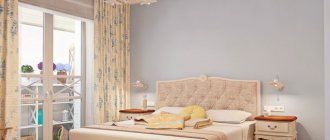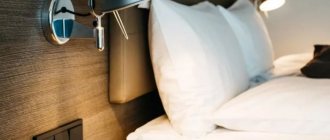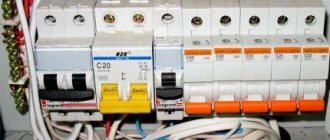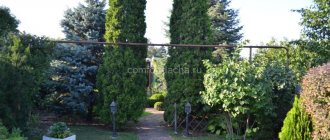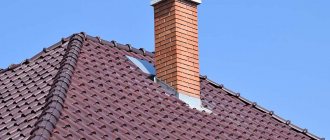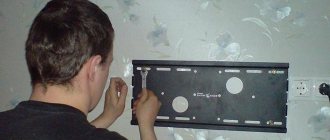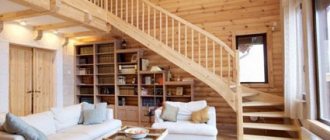The location of power supply points, the installation height of sockets and switches is a serious issue that requires planning, drawing up diagrams, and calculating their number for each room.
If you approach the installation with advance planning, you won’t have to unwind the extension cord, trip over the carrier, and plug everything in there, thereby overloading the outlet or even the network.
Our material will help you determine the optimal amount of electrical fittings and the rules for their location. We will also tell you about all the intricacies of placing and installing electrical points in an apartment or house.
Features of installation of switches and sockets
The reason for long discussions is the height of the sockets from the floor. Since the exact definition is not written down anywhere, you can use concepts such as “European standard” or “Soviet standard”. When a “European-quality renovation” is planned in an apartment, most likely the sockets will be placed at a level of 300 mm from the floor, but the switches will be already at 900 mm.
According to the “Soviet standard”, the switch would be installed at shoulder level - this is approximately 1600 mm, and the socket would also be much higher - at 900 mm from the floor.
Each method has its pros and cons. Let's look at them briefly.
The Soviet standard for installing switches and sockets still occupies a leading position in society, since these layouts are still in demand in the market
#1. Features of placement in the corridor
For a hallway, 1–2 sockets are enough. It is better to place them in a corner near the baseboard at about 15-20 cm from the floor. This will allow you to connect various household appliances, for example, a vacuum cleaner, an electric shoe dryer or a phone charger.
Lighting and electricity points in the corridor are located so that it is convenient to use when leaving/entering the house, connecting infrequently used devices
In addition, other devices will fit perfectly into the corridor.
Among them:
- apartment distribution board with circuit breakers;
- Voltage regulator;
- an electric meter, although a separate place is provided for apartments on the staircase, it can also be installed in the corridor;
- switches for kitchen, bath and restroom;
- junction box for TV cable, Ethernet or landline phone;
In most cases, this is quite enough, but sometimes they also provide for the installation of a heated floor sensor in the corridor.
#2. Location of electrical points in the bathroom
Of course, the number of electrical outlets in the bathroom will depend on the area and number of appliances, but in 95% of cases, 1-2 outlets will be enough. It is advisable to place the first one close to the mirror at a level of 1000 mm from the floor. It will connect a hair dryer and an electric razor. The second, for example, is connected to a washing machine or heater. In this case, at least 600 mm from the floor for the machine, and 1500 mm for the boiler.
There are no rules against installing outlets in the bathroom, despite the fact that the area is considered an electrocution risk.
It goes without saying that mounting both sockets next to a water tap is strictly contraindicated, so there should be a distance from the bathtub and sink of more than 600 mm, and preferably 1000 mm. It is imperative to worry about protection from moisture and install a waterproof outlet.
We must not forget that products may be subject to even greater danger. Since the bathroom is at risk of flooding, fixing products below 150 mm from the floor is completely unsafe. If water gets into the socket, the threat to life is simply colossal.
The optimal height for installing sockets in the bathroom is selected based on ease of use and minimizing contact with water
The reasons for this can be various situations, from a leaking faucet or pipe, to breakdown of household appliances or forgetfulness of the owners.
#3. Specifics of installation in the living room
A home theater or a simple TV box will require a separate outlet, or better yet two. The first is for the TV receiver itself, and the second is for the satellite receiver. The height level should be determined based on the location of the TV itself. It can stand on a cabinet, be mounted into a wall, or fit into a special cell of a furniture wall.
The power cord must not dangle or be under tension. It should be completely hidden behind the screen.
The living room in a small apartment can be visually divided into two separate zones: a space near the desk and a part for relaxing on the sofa in front of the TV.
On each wall, you should additionally place 2 sockets at a level of 150–300 mm from the floor. They can be used to connect a floor lamp, a fan, chargers for gadgets, a game console, or a vacuum cleaner.
You should worry about the possibility of conveniently connecting the air conditioner.
If there is a personal computer in the living room, you will need to take care of a separate power supply point for it. Read about how to connect it here.
It is recommended to place sockets and switches so that they are hidden from view if possible
#4. Rules for location in the kitchen
Every year, more and more intelligent technology is being developed to ensure human comfort and time. Naturally, the amount of equipment, and therefore sockets, in the kitchen in some places is simply off the charts. It is imperative to provide for the connection of a hood, possibly a washing machine, dishwasher, or electric stove.
But the main thing is a refrigerator, a microwave oven or a slow cooker, sometimes both. Mixer, juicer, food processor, toaster, blender, coffee maker and TV - this list is probably endless.
Installing electrical sockets in kitchen furniture is a convenient way to create a visual appearance of the absence of these devices and increase comfort (+)
An outlet is usually installed behind the refrigerator at a level of 600–800 mm. For the hood, it is advisable to increase the height three times – 1800–2000 mm from the floor.
When connecting an electric stove, the socket must be mounted 200–300 mm from the floor. Additionally, a hole is cut for it on the back wall of the kitchen furniture, if any.
For powerful consumers, a separate outlet is installed in the kitchen, independent of the general power line
Having estimated the location of the future working surface, it is necessary to provide connectors there as well. It is advisable to place at least three sockets 100–200 mm above the tabletop to connect small equipment.
A TV in the kitchen is most often mounted on wall brackets; accordingly, the height of the socket for this household appliance can be from 1800 to 2000 mm from the floor.
#5. The nuances of placement in the bedroom
Four products are sufficient in this room, with two sockets on each side of the bed. They will be intended for a bedside floor lamp, electronic clock or additional devices, such as an air conditioner, fan or vacuum cleaner. Near the chest of drawers with a mirror, it is also advisable to install one socket at a level of 600–700 mm from the floor to connect a hair dryer or hair straightener.
If there is a TV or PC in the room, you should also think about where to hide the wires and how to place the electrical connectors.
#6. Competent planning of power points in the nursery
A children's room is usually a combination of a bedroom and play space. This room also cannot do without electrical outlets. It is advisable to have at least 2-3 of them. You can put a lamp near the crib, and the rest for additional purposes.
Modern technologies make it possible to emphasize the visual component, while not forgetting about the safety of children, eliminating the chance of fingers getting inside
Many experts warn that plug connectors should be mounted as high as possible away from small children. They were right about this a few years ago.
Modern developments have made it possible to equip products with additional protective covers that prevent the child from coming into contact with the electrical network. These valves often require considerable effort to gain access to the plug holes. Spontaneous children's curiosity will be stopped.
#7. Subtleties of installation in the office
This room is not much different from the living room in terms of the location of the connectors. A minimum of 5-6 devices will be required to connect a PC - a system unit, a screen, audio speakers, a scanner and a desk lamp. Near the shelves for books you need to provide a place for reading.
Installation of a lamp and a comfortable chair should be included in the project plan, and this is another auxiliary connector. The other two devices are placed on an unoccupied wall. Each connector is mounted at a height of 150–300 mm from the floor.
There are two options for connecting the air conditioner. Directly through the machine or through an outlet. In the first option there will be no hanging cords, but you must definitely choose a high-quality machine, on which the functioning of the device will depend. In the second case, the socket must be placed at a level of 300 mm from the ceiling.
Installation height of sockets in different rooms
Living room or hall
Under TV, in the living room, at a height of 140 cm.
Read more about this in the article - how to choose the correct height of the socket in the bedroom for the TV, taking into account the diagonal of the TV.
Bedroom
— above the desk 900 mm because standard tabletop 75cm + required space 15cm
- above the bedside tables: 600 - 700mm
- for a TV in the bedroom - 150cm. Depending on the height of the TV installation, it changes; we have already written in detail about all the options here.
In the kitchen
Above the tabletop on the apron – 110 cm
For refrigerator 10 - 30cm
Under the stove, dishwasher, built-in oven: 10 cm (under the base of the kitchen unit), 30-50 cm behind the stove or in an adjacent cabinet
For kitchen hood 155-165cm to floor tiles. Heights vary for stoves and hobs.
In the bathroom
For a washing machine - 100cm, more information about the socket for a washing machine is here .
Location of lighting points
Lighting control points in the house are divided into three main groups:
- This includes classic switches - these are devices of different types, often with one or two keys. But thanks to three-key switches, you can simultaneously use three different groups of lighting installations.
- This group includes switches, which, when activated, control several lighting sources from different places at once.
- This group includes devices in which lighting control mechanisms are already built into the lighting tools. These include a table lamp and a floor lamp/
In the apartment, almost all rooms are equipped with one- or two-key switches, which is considered justified and, most importantly, comfortable.
The category of general lighting often includes lamps placed under the ceiling, providing uniform diffused light
For example, for a bathroom, an additional light source can be a lamp above the mirror. But regulation for such a device is carried out using a built-in switch
The bedroom has its own unique switch system. It allows you to adjust the light source simultaneously from different places. Let's look at convenience using an example.
Each sleeping place must be equipped with a lamp in the form of a night light on a table, bedside table, wall sconce or floor lamp
Every time you need to turn the light on or off, you have to get out of bed, since the switches are located quite far from the bed. The solution is obvious. Three switches are installed in the room at once. One is at the exit from the room, and the other two are on both sides of the bed. As a result, it has become very easy to regulate the lighting in the bedroom, and access to switches will be at hand.
Other premises
In other rooms, general rules apply, except for a few special cases:
- TV socket: at a height of 140 cm;
- above the desk: 90 cm (with a standard table top height of 75 cm);
- for a computer desk: at a height of up to 30 cm, a socket block of several sockets;
- in large rooms and long corridors, two changeover switches are installed - at one end and the other. Such switches, on the one hand, have two contacts - they connect the devices with each other, and on the other - one at a time. The first switch is connected with a single pole to the phase, the other - to the lamp. The user can, entering the corridor, turn on the light with the first rocker switch and then turn it off with the second at the end of the room.
In rooms where small children live, it is recommended to install sockets with plugs in the lower zone (up to 30 cm).
Accommodation tips from experts
Where and how to locate switches and sockets must be determined only on the basis of safety and, of course, comfort. Today there are no prescribed standards that would indicate the location of electrical connectors and switches. Especially their quantity in a separate room.
Planning is the stage of calculating the number of mechanisms that a person will use on an ongoing basis, regardless of the premises. Plus 1-2 more sockets on top for additional devices. The most stringent requirements are imposed only on craftsmen who install electrical appliances in the apartment. Such people should be specialists with good experience.
But if you decided to carry out all the work yourself, then you need to familiarize yourself with all types of electrical equipment. Since the product range is very wide, this means that equipment can be found for every need.
This can be an audio socket that allows you to connect acoustics, a stereo system or a connector for a landline phone, as well as a socket for an Ethernet cable.
The installation height determines the comfortable living conditions in the house, its safety, improvement and beauty.
Existing European standards: is there such a concept?
The terminology “Eurostandard” began to be used together with the concept of “European-quality renovation”. In fact, there is no such term, because each European country uses its own standards for the location of food outlets. The European standard means the following values: the installation height of switches from the floor should be 90 cm, sockets - 30 cm. This arrangement can be comfortable for children who can independently reach the switch and turn off the light. Currently, Russia has its own standards that recommend where to place food outlets. Such documents are PUE, GOST Z 50571.11.96, SP 31-110-2003.
A few tips on how to choose the height for switches
Despite accepted standards, people tend to crave individuality. If there are any non-standard solutions for installing switches, you should not immediately implement them, you need to think carefully about everything.
Some tips for making a decision.
- Draw on the walls a plan for the location of switches around the entire perimeter of the apartment. Play out the scene in your mind, what it would look like to turn the light on and off. You may find that it is better to move the switch to the other side of the door or lower it a little higher so as not to bend your arm.
- Consider where the furniture will be located so that the light can be turned on without obstruction.
- You can ask friends and relatives if the height of the sockets at home is convenient for them. What would they like to redo, change. Take note of their answers and try not to repeat the mistakes.
- For safety reasons, you should not install electrical structures near sources of heat and water.
- The most common height for installing a switch is at the level of a person’s lowered hand.
You definitely shouldn’t lower the switch too low to the floor so that you don’t have to crouch when turning on the light. Also, do not lift it up to the ceiling so as not to stretch.
Rules for the construction of electrical installations (PUE)
The PUE regulates the placement of sockets as follows:
- You can install sockets in the bathroom of an apartment or hotel room, but only together with a residual current device (RCD) or an isolation transformer;
- The socket should not be placed closer than 0.6 m to the shower door;
- Each group of sockets located in the apartment must have an RCD;
- It is prohibited to install electrical equipment closer than 0.5 m to the gas installation;
- It is prohibited to place in baths and saunas.
How to install electrical outlets yourself
Connecting sockets is not difficult, so many people prefer to do all the work themselves. This can only be done correctly if you know how to connect them. Remember that any connection error can be dangerous for a person.
So how do you connect electrical outlets? Here's a quick guide :
- turn off the electricity in the building;
- make a hole in the wall where the outlet should be (be careful not to damage the internal installation);
- insert the electrical box and connect the cables to it;
- connect the cables to the socket (yellow wire to the contact, black phase wire to the L plug, blue neutral wire to the N terminal);
- secure the socket cover to the wall using a screwdriver;
- turn on the power and check the operation of the contact, for example, with a screwdriver with a voltage sensor.
According to international standards, each wire connected to an outlet must have a specific color. Zero - blue wire, phase - red or brown
